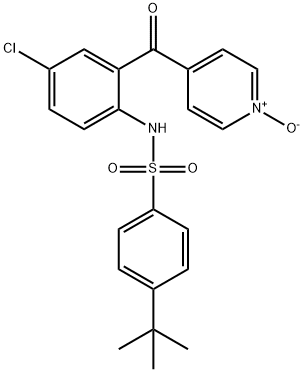Description
Vercirnon is an orally bioavailable antagonist of chemokine receptor 9 (CCR9) with an IC
50 value of 5.4 nM for inhibition of CCL25-induced calcium mobilization in Molt-4 cells. It is selective for CCR9 over CCR1-12 and CX3CR1-7 (IC
50s = >10 μM for all). It also inhibits CCL25-induced Molt-4 chemotaxis in 0.1% BSA/HBSS and in 100% human AB serum (IC
50s = 3.5 and 33.4 nM, respectively), as well as chemotaxis of human T cells stimulated by retinoic acid (RA) and mouse and rat thymocytes. Vercirnon binds allosterically to the intracellular side of CCR9 and prevents G protein coupling.
Uses
Vercirnon (GSK1605786A) is an orally bioavailable, selective, and potent antagonist of CCR9. Vercirnon inhibits CCR9-mediated Ca2+ mobilization and chemotaxis on Molt-4 cells with IC50 values of 5.4 and 3.4 nM, respectively. Vercirnon is selective for CCR9 over CCR1-12 and CX3CR1-7 (IC50s>10 μM for all). Vercirnon is an equipotent inhibitor of CCL25-directed chemotaxis of both splice forms of CCR9 (CCR9A and CCR9B) with IC50 values of 2.8 and 2.6 nM, respectively[1].
in vivo
Vercirnon (GSK-1605786) (10、50 mg/kg;sc;每天两次;从 2 周龄开始至 12 周龄) 改善 TNFΔARE 小鼠模型中肠道炎症的严重程度[1]。
| Animal Model: | C57BL/6 mice (TNFΔARE Mouse Model of Terminal Ileitis)[1] |
| Dosage: | 10, 50 mg/kg |
| Administration: | Subcutaneous; twice per day; starting at 2 weeks of age until 12 weeks of age |
| Result: | Resulted in complete protection from the severe inflammation associated with TNF- overexpression at 50 mg/kg. A similar protective effect was also noted with a lower dose.
|
References
[1] Walters MJ, et al. Characterization of CCX282-B, an orally bioavailable antagonist of the CCR9 chemokine receptor, for treatment of inflammatory bowel disease. J Pharmacol Exp Ther. 2010 Oct;335(1):61-9. DOI:
10.1124/jpet.110.169714[2] Bekker P, et al. CCR9 Antagonists in the Treatment of Ulcerative Colitis. Mediators Inflamm. 2015;2015:628340. DOI:
10.1155/2015/628340[3] Zhang J, et al. Biarylsulfonamide CCR9 inhibitors for inflammatory bowel disease. Bioorg Med Chem Lett. 2015 Sep 1;25(17):3661-4. DOI:
10.1016/j.bmcl.2015.06.046

